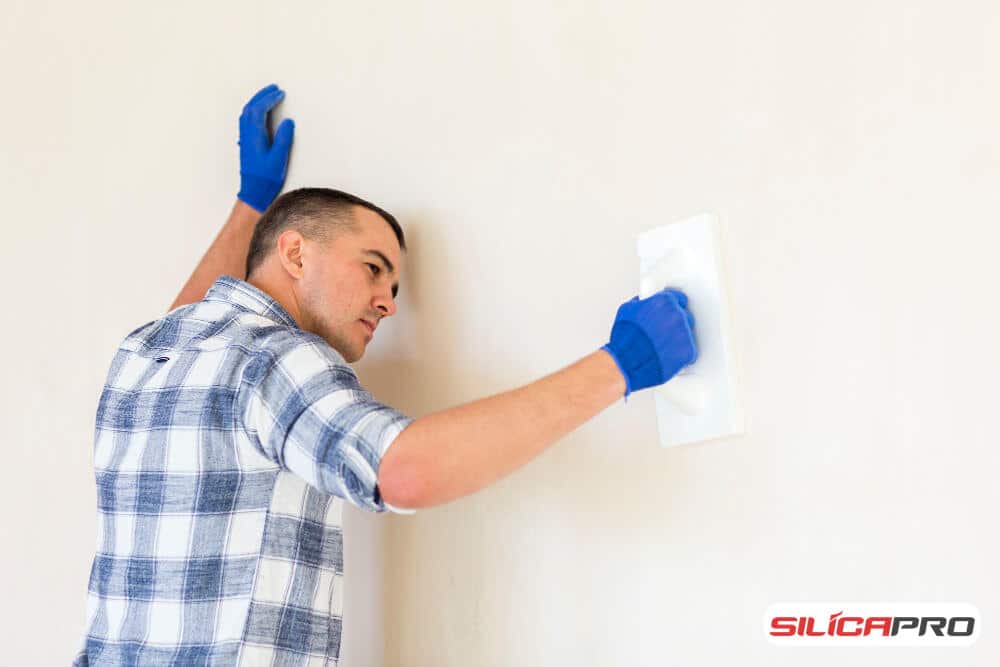
Residential buildings or commercial areas require strong, durable, smooth, aesthetic walls as well. Nowadays, there are many ways to make this happen, such as fiberglass wall coatings. It is a protective layer of fiberglass material which is known for its strong, light, and durable characteristics. Many factors support the increase in the use of wall coatings from fiberglass. Let’s find out together.
Contents
Factors Increasing the Use of Fiberglass Wall Coatings
Fiberglass wall coating is also known as fiberglass wallpaper. Even though in its original appearance, this is not like wall wallpaper in common, but more like a wall covering. There are many different terms to call it, but they all refer to fiberglass textiles as protection for ceilings and walls or as decoration.
The increase in the use of fiberglass as wall coating is not without reason. It would grow as a promising business idea in the future. Many factors influence it.
- There is significant growth in the construction industry. It is a factor that supports people’s higher interest in fiberglass wall coatings. Currently, population growth, urbanization, and income continue to increase. Indirectly, this has an impact on the demand for better and more modern buildings. One way is to add wall coatings.
- Preference to participate in preserving nature and the environment. People are increasingly aware of energy efficiency and sustainability. So, the use of wall coating is increasing because of the properties of fiberglass as excellent thermal insulation.
- Fiberglass wall coating is easy to install, does not require a high level of skills, and saves time and costs. You don’t need to match the edges and set aside time for soaking so installing fiberglass wall coating is fast and effective.
- The nature of fiberglass is that it is resistant to moisture, fire, and exposure to chemicals. Fiberglass can be applied to many functionalities. It is suitable as an interior support for residential, commercial, or industrial areas and has aesthetic value.
- You can customize according to the design you expect because fiberglass wall coating is easy to design. The wall design is also more interesting because of the many different textile structures and patterns.
Types of Fiberglass Wall Coatings
Currently, many manufacturers produce exclusive fiberglass wall covering products. These products also have different constituent components, resulting in different types of wall coating.
For example, there are fiberglass wall protectors made from 100% solid epoxy resin with a fiberglass backing embedded in the resin or a different percentage of other components. There are two types of wall coating in general.
- Woven fabric wall covering. This type is made from fiberglass fiber and is textured. Makers weave the material vertically and horizontally. The texture of this coating brings a more traditional and visually attractive appearance. If you have a residence with a classic concept, this will be very harmonious.
- Non-woven fabric wall coverings come from fibers that go through a heat, mechanical, or chemical bonding process. It is not textured but rather the result is more even and smooth. The application is more suitable for modern and classy buildings.
Even though they have different application segments, the aesthetic value of both can support any home or industrial concept. Both also have good strength and durability which will beautify the appearance of your walls.
Fiberglass wall coating is a substitute for paint or wallpaper on the walls. It is durable, easy to install and maintain, and does not leave aesthetic value. Many hotels, offices, and other public facilities also use this coating to beautify walls and protect them from fire. It will also last longer even if installed in a dense area with high mobility.
Conclusion
Several factors support the rationale for why fiberglass coatings are becoming a trend. These factors include people’s desire to be involved in efforts to save the environment by using environmentally friendly materials. Fiberglass is a material that can adapt to many concepts and aesthetics in a house or building. Fiberglass is a healthy insulation choice and supports energy efficiency.
This type of fiberglass coating has developed as a medium for covering damaged walls, beautifying the appearance and making the room feel more comfortable. It is also an effective way for those who want to renovate, but don’t want to bother painting the walls. In the future, there will likely be more variations of designs and textures, as well as the latest innovations.
